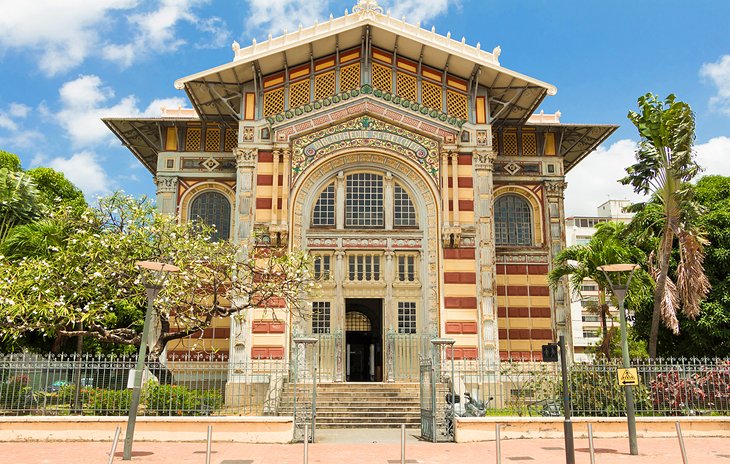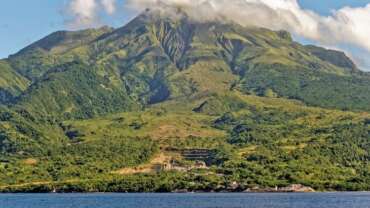Experiences in Martinique
Not to miss sights in Martinique
The town of Saint-Pierre
At the foothills of Mount Pelee, Saint Pierre sits in the hollow of a bay bordered by a gray sand beach. Since the eruption of 1902 that ravaged the city and killed all its inhabitants, fishing and tourism have been the only resources of the city. Many vestiges of the past remain, like the old prison with the Cyparis dungeon, the Fort’s old church, the Habitation Levassor ruins and the old theater.
Fort de France
Nestled in the Bay of Flamands (External link) and at the foothills of the Carbet, the Martinican metropolis is the Creole soul of the island, with its historic center and colorful markets.
The village of Sainte-Anne
The town of Sainte-Anne, in the south of Martinique, is home to some of the most beautiful beaches of the Lesser Antilles on 22 kilometers (13.67 miles) of shoreline. Its landscape is varied and surprising, lush with coconut trees, savannahs and ponds. The coastline is a place of tranquility, ideal for cocktail hour, as its also home to many lively bars.
La Caravelle nature reserve
Formed 10 million years ago, the peninsula of Caravelle is the oldest part of Martinique. Jutting out 10 kilometers (6.2 miles) in the Atlantic Ocean, Caravelle is a protected nature reserve whose diversity of landscapes is absolutely remarkable.
Le Carbet
Painted by Gauguin, the town of Carbet is among the most visited sites in Martinique. Aside from its artistic history, this is also where Christopher Columbus landed during his fourth trip in 1502. With its gray sand beaches and breathtaking views of the volcano, Le Carbet has a remarkable past and stunning present.
The town of Grand-Rivière
This remote fishing village at the foothills Mount Pelee is located at the north of the island. Not as touristic as other spots on the island, its authenticity and true Martinican charm make it well worth the trip!
Grand-Rivière is also a great place to practice rock-climbing.
La Savane des Esclaves Museum of slavery
Slavery and the slave trade are inseparable from the history of Martinique. This site of Trois-Îlets aims to trace this story through the reconstruction of an authentic Napoleonic village of the 19th century. A visit to the museum reveals the very difficult living conditions of slaves.
Les Gorges de la Falaise
The Falaise River that descends the slopes of Mount Pelee meanders its way between the impressive walls of a canyon. A trip down the river is best accompanied by a guide to help navigat the slides, jumps and baths of fresh water in the crystalline basins of the Gorges.
Cap 110, the Anse Caffard slave trade sculpture installation and memorial
Located in the town of Le Diamant, the Cap 110 memorial is a tribute to all victims of slavery in Martinique. Fifteen busts of 2.50 meters (8.20 feet) high are arranged at the top of the rock of the Caffard Cove, facing the tormenting winds of the Atlantic.
Les Salines beach
The beach of Salines in Sainte-Anne is often cited as the most beautiful beach in Martinique, and the weekend crowds on this long strip of white sand lined with coconut trees testify to that. Picnic tables are available in the shade and some snacks vendors offer their services.




